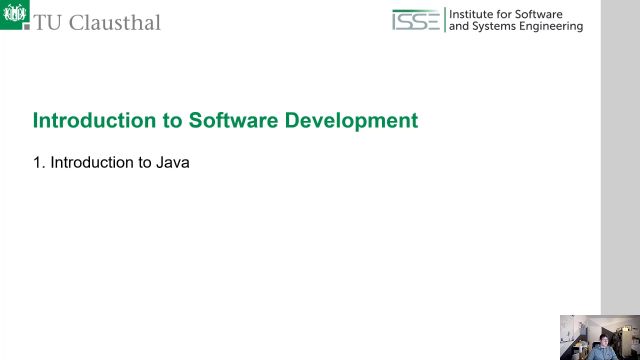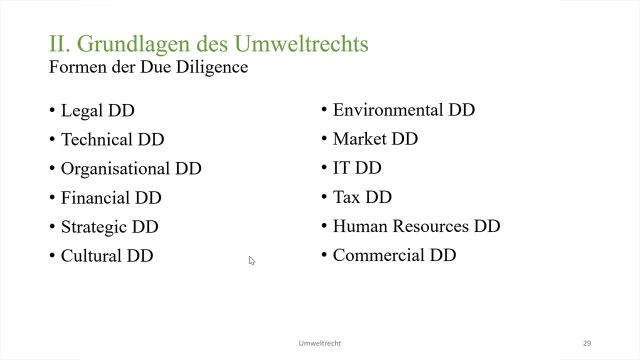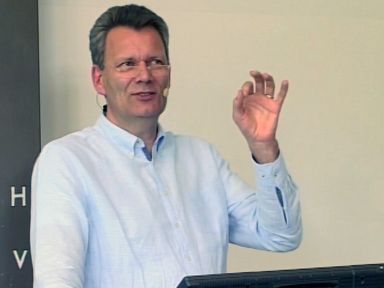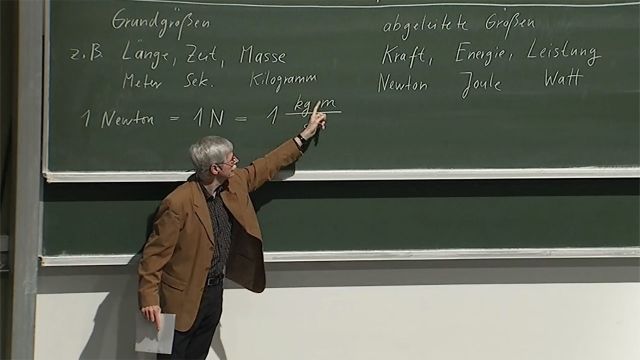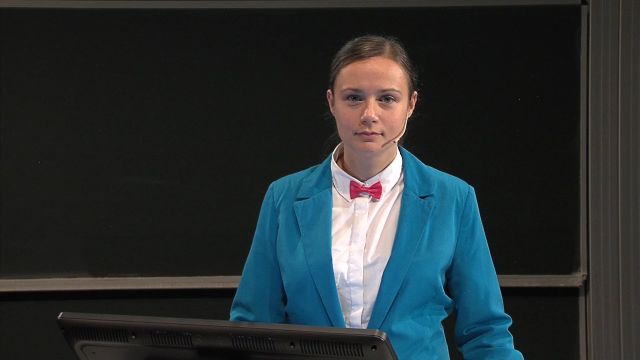Vorlesungsaufzeichnungen
Hier finden Sie Aufzeichnungen von Vorlesungen an der TU Clausthal.
Center for Digital Technologies
Institut für deutsches und internationales Berg- und Energierecht
Institut für Elektrische Energietechnik und Energiesysteme
Institut für Energieforschung und Physikalische Technologien
Institut für Energieverfahrenstechnik und Brennstofftechnik
Institut für Informatik
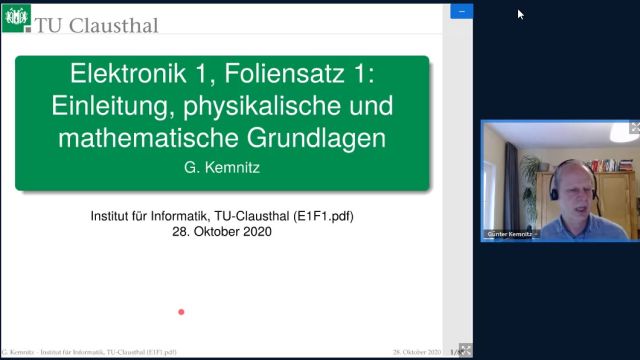 10.48138:34:54WS 21/22Deutsch
10.48138:34:54WS 21/22DeutschElektronik I
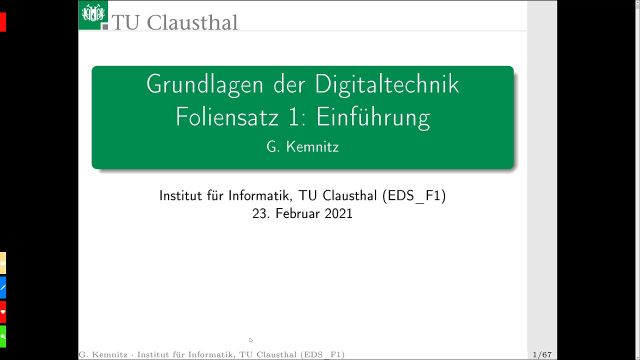 8.10421:19:20SS 2021Deutsch
8.10421:19:20SS 2021DeutschGrundlagen der Digitaltechnik
- 1.62419:03:09SS 2021Deutsch
Elektronik II
- 45627:38:00SS 2021Deutsch
Test und Verlässlichkeit
- 3.74211:57:45WS 20/21English
Cooperation Systems WS 20/21
- 1.21604:49:34SS 2020English
Multiagentensysteme und Algorithmische Spieltheorie
- 4.13721:21:36SS 2020Deutsch
Entwurf digitaler Schaltungen
- 6.45415:43:31SS 2019Deutsch
Mensch-Maschine-Interaktion
- 6.54313:46:54SS 2018English
Serious Games
- 4.81804:23:34WS 16/17English
Wissenschaftliche Arbeitstechniken für Seminare
- 14.01722:31:37SS 2016Deutsch
Logik und Verifikation
- 2.79923:48:11WS 15/16Deutsch
Rechnernetze II
- 9.87227:04:05WS 15/16Deutsch
Rechnernetze I
- 7.66820:00:34SS 2015Deutsch
Rechnerorganisation I
- 1.80023:36:50SS 2015Deutsch
Rechnerorganisation II
- 4.28409:57:54WS 14/15Deutsch
Werkzeuge der Informatik
- 2.86020:00:03SS 2011English
Komplexitätstheorie
- 19.97825:14:56WS 10/11Deutsch
Informatik III
- 14.26230:55:02SS 2009Deutsch
Künstliche Intelligenz
Institut für Maschinenwesen
- 1.36001:07:00SS 2016Deutsch
Antrittsvorlesung Prof. Dr.-Ing. Wan Gang
- 37.56120:36:31SS 2005Deutsch
Konstruktionselemente I
- 51.41439:27:18WS 05/06Deutsch
Konstruktionselemente II
- 20.04224:17:00SS 2006Deutsch
Konstruktionselemente III
- 21.43219:32:54WS 06/07Deutsch
Konstruktionslehre I
- 11.22817:19:12SS 2007Deutsch
Konstruktionslehre II
- 39.65721:49:22WS 04/05Deutsch
Maschinenlehre I
Institut für Mathematik
- 54517:20:56WS 15/16English
Transportation Analysis, Modelling and Simulation
- 17701:35:50WS 15/16English
Seminar in Ubiquitous Computing
- 1.00316:51:39WS 15/16English
Computational Modeling and Simulation II: Continuous Systems
- 16402:45:14WS 15/16English
Research Seminar in Cyber-Physical Systems
- 2.63726:22:01SS 2015English
Introduction to Cyber-Physical Systems
- 1.66320:04:09SS 2014English
Discrete Event Simulation
- 1.18815:17:36SS 2014English
Embedded Computing Systems
- 1.98203:59:17WS 13/14Deutsch
Ausgewählte Kapitel der Analysis/Linearen Algebra
- 1.29215:21:13WS 13/14English
Hardware Software Co-Design
- 2.81917:30:12WS 13/14Deutsch
Lineare Algebra und diskrete Strukturen III
- 3.52116:13:07SS 2013English
Internet of Things
- 5.96229:03:41SS 2013Deutsch
Angewandte Graphentheorie
Institut für Metallurgie
Institut für Nichtmetallische Werkstoffe
- 1.06305:36:45WS 14/15English
Introduction to Ceramics Processing
- 5.91207:50:08WS 09/10Deutsch
Technologie der Keramik
- 7.77412:04:10WS 06/07Deutsch
Grundlagen der Keramik I
- 4.03011:02:16SS 2007Deutsch
Grundlagen der Keramik II
Institut für Software und Systems Engineering
- 61118:05:05SS 2024English
Emerging Technologies for the Circular Economy SS24
- 6804:48:24WS 23/24English
Introduction to AI (WS 23/24)
- 14903:26:21WS 23/24English
Introduction to AI
- 96014:47:38SS 2023English
Emerging Technologies for the Circular Economy SS23
- 41910:35:19SS 2023English
IoT and Digitalization for the Circular Economy SS23
- 16909:22:25SS 2023English
The Limits to Growth - Sustainability and the Circular Economy (SS23)
- 40214:56:09SS 2022English
The Limits to Growth - Sustainability and the Circular Economy
- 62319:45:50SS 2022English
Emerging Technologies for the Circular Economy SS22
- 16202:59:47SS 2021English
Introduction to Software Development Wittek
- 82815:34:05SS 2020Deutsch
Nachhaltigkeit und Dynamische Systeme
- 12.35020:00:39SS 2020Deutsch
Programmierkurs SS2020
- 1.10820:34:02SS 2016English
Project and Quality Management in Software Systems Engineering
- 1.94331:03:23SS 2015English
Model Driven Software Engineering

